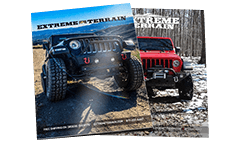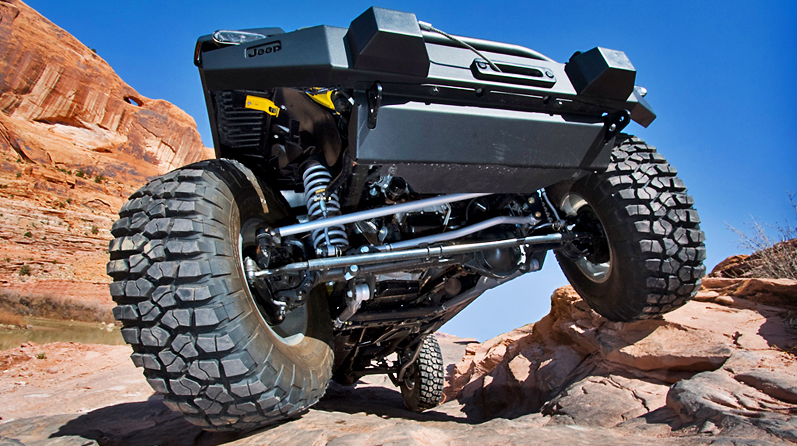


Jeep Shocks: Choosing the Right Kind to Fit Your Driving Style
Jeep Shocks: Choosing the Right Kind to Fit Your Driving Style
Shock absorbers are an old technology, in the sense that they've been around since the early part of the century. Some of the first shocks were lever shocks, but after those came the tube shocks we 're all familiar with today, going on 75+ years. But though the basics are very similar, technology has made some improvements along the way, and to some people, there are still some mysteries when it comes to shocks, and choosing the right ones. The job of a shock (or strut) is to dampen vibration from the road. But it's other main function is to hold the tires in contact with the road. On a street car, at high speed, you want those tires to stick like glue. On an offroad vehicle, you want a larger tire to do the same. You don't want a lazy shock, or a weak shock, because that will not exert enough force on those big tires to hold them down, in contact with a trail or road. When the tires lifts up, you want a force to push them right back down. Right now. If the shock doesn't do it's function, the tire will bounce a few times, and the next thing you know, the tires are cupped. Because the tire is "floating". Bad shocks can also prevent your vehicle from being stable and handling correctly. Like when you see a car hit a dip in the road, and it wallows out of it swaying up and down so much it makes you seasick just to watch. The shocks(or struts) are not controlling and dampening properly. In many cases, over time, shocks and struts just plain where out. Internally, where the seal on the piston no longer works correctly. To much or to little oil is passing through the valve and this has weakened it's dampening ability. Externally, you might see oil on the shock body, or up around the piston seal. Once the seal is breached, it's all over. The oil is leaking out, and if it had nitrogen gas inside, it's also leaking out if it's not already gone. It's probably time to replace them. But let's look at shocks for a moment before we choose one. First, there are TWO basic kinds of designs. Forget the brands. No matter what brand of shock it is, it will pretty much be one of the two designs. The two designs are: Twintube-low pressure, and monoube high pressure. So let's look at the Twintube design first.
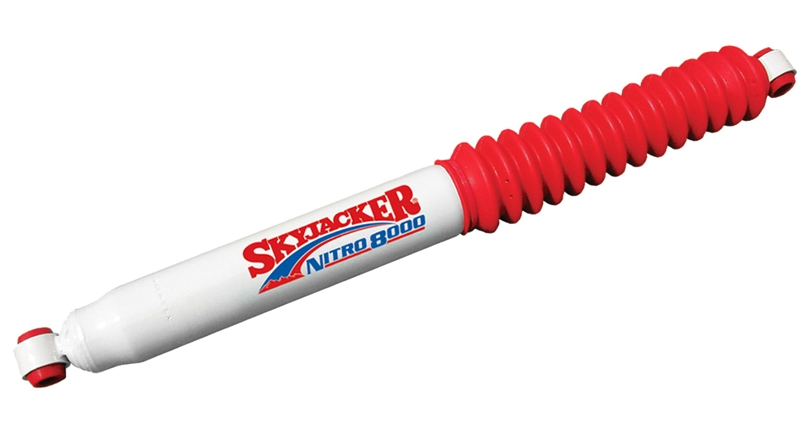
A Twintube shock is oil filled, and will sometimes have a small amount of nitrogen gas in it. In the middle there is a piston. The oil restricts the piston and the way it travels up and down inside the tube body. Some companies have creative ways to making these valves a little different from brand to brand, but they all have the same job. In a twin tube, the oil and nitrogen gas (if there is any) are in the same chamber, mixed together. The piston travels through these as it's working. Now, have you ever shaken up a soda can or bottle? The way it foams up, that's what happens inside a Twintube shock when you are driving. The piston mixes the air and oil, and causes foam (or, aeration or cavitation, depending on what you want to call it). It's important to note that foam is not a great resister, like oil. Meaning, the piston easily flows through the foam much better than it would through oil. This is why you sometimes hear "shock fade", or the "shocks are going away". In the old racing days, a race car would handle great the first few laps, but as soon as they got some laps in, the shocks would have aeration, foam up, causing heat, and the shock's ability to dampen, and hold the tire to the pavement, would fade away. Now the race car won't handle like it did on the first lap when the shocks were cold (and the oil was thicker). Today's drivers aren't usually racing their vehicles. So most common vehicles will have a twin tube shock as an OE part. That's perfectly fine. For everyday driving, that's more than enough to keep the tires in contact wit the road, and absorb vibrations, and offer control and handling. Twin tube shocks tend to cost less to manufacturer, and that's another benefit to them for a consumer. Now let's take a look at Monotube shocks.
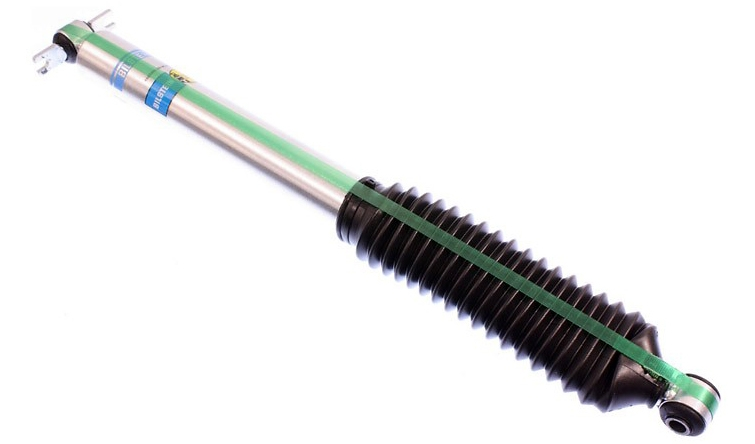
Monotubes are typically high pressure. For instance, Bilsteins run around 360 psi inside. That high pressure exerts a force to prevent aeration, to prevent any bubbles from forming. Inside the shock, the oil and high pressure nitrogen gas are in two separate chambers, separated by a floating piston. Meaning, the oil and gas do not come in contact with each other. Monotubes are used for performance. Because they're a monotube, you can get away with a stiffer valving. Of course, with the less aeration inside, they continue to dampen well, even after hard use, lap after lap, mile after mile. Now you've got the force on the tire, so you know when you go into a high speed turn, the tire won't "pickup" or "float". (if you ever took a turn at high speed, and heard a tire squeal, that's probably because the tire is loosing contact with the road, and the shock isn't doing it's job). On a 4x4, with a larger tire, you have more force to hold the tire down, and that usually leads to better stability (if the rest of the suspension is up to par) at higher driving speeds. Even if you're rock crawling at low speed, you still get the benefits of the extra force on the tires that a monotube gives. So with all this in mind, which are the better shocks? Performance wise, as far as dampening ability, a monotube will win out. That's science. Any shock dyno will reflect that. So if you want a shock that's less likely to fade, get aeration, and heat, with superior dampening, monotube is the way to go. But if high performance is not your goal in that area, or that's overkill, then a twin tube should be ok. There are different kinds of Twintube shocks, some of the allow you to adjust the valving inside, and that's a feature worth looking at. Most vehicles on the road use a twin tube design, and it's the most common. You must decide which shock type meets your goals and expectations of what you'll be doing with your vehicle. The choose twin tube or monotube. and then choose the brand you want to use. What about stiffness? The stiffness of a shock (for instance, when you try and compress it with your bare hands) is a matter of valving. Twin tube shocks have less valving, and can usually be compressed by hand. A monotube, being a performance part, usually has a stiffer valving (and are difficult to compress by hand). The valving helps determine the force exerted on the tire and suspension, but also how fast or slow the shock will extend back out after being compressed. (they are actually called Compression and Rebound valvings). Unless you are using a racing shock, most companies don't give out valving specs, and there isn't much you could do with that information anyway, except for racing applications. What about external reservoirs?
High performance monotubes sometimes will have an external reservoir. This is to add extra oil to help keep the shock cooler. In extreme racing, or desert conditions, it's a serious upgrade. The oil typically flows back and forth between the reservoir and shock. Will the shocks hold my Jeep / Truck up? No. They don't support the vehicle, your springs do that on the suspension. What about longer shocks? Most of the shocks companies that offer products for 4x4s and lifted vehicles all make shocks that are longer than stock. These are specifically designed to work with a lift kit. When it's possible, it's best to purchase a lift that offers shocks to be used with the kit. That way you know an engineer has designed the parts to work in unison correctly. If you custom fabricated something, without a specific application, you can still usually get a shock, simply by size. Offroad shocks come in different lengths, so by knowing the Compression and Extended length of the shock, and the mountings at each end, you can usually get pretty close that way. What about the ride? Unfortunately, "Ride" is a subjective term. Meaning, it's not scientific. There's no way to chart it, or show stats, or pop it in a spreadsheet. Ride in your vehicle in the passenger seat, then in the back seat. It probably feels different all the way around, right? Will a Jeep Wrangler ever be a Cadillac? Not likely. Even something as simple as changing the tire pressure can make a vehicle "ride" or feel different. Shocks are only ONE part of a vehicle, and the suspension, they are not magic out of a box. There's no way to predict how a vehicle will feel anytime you do a modification. What about struts?
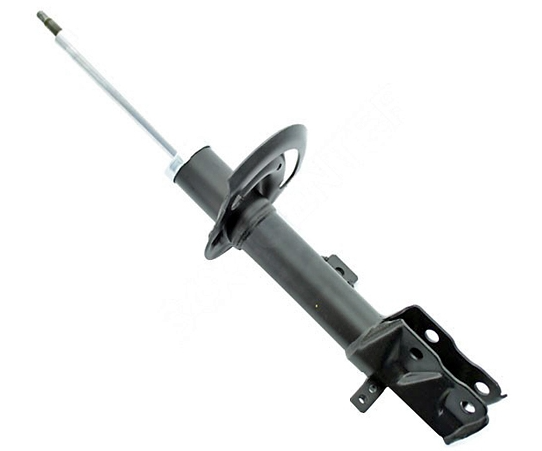
Struts work essentially the same, as far as there are twin tube struts, and monotube struts. While it's a big argument sometimes, the difference is a strut has a spring that sits on a perch, and the spring goes around it. A shock is typically separate from a spring. Shop wise, and labor wise, it's more complicated and takes more time to usually remove a strut, especially without the proper tools. Modern pickup trucks use struts in the front, as well as a Jeep Patriot and such. Why Nitrogen Gas? Nitrogen gas is an inert gas. Meaning, it's non flammable. It's also very common. The gas inside a shock is primarily to help prevent aeration (foaming) which is bad for allowing a shock to dampen properly, as mentioned above. Twin tube shocks have a lower pressure, rarely over 150 psi. Monotube shocks can go much higher, such as a Bilstein with 360 psi. Don't equate the gas pressure with how stiff a shock is. How stiff a shock is depends on how it is VALVED, by compression and rebound (as mentioned above)..Not by the pressure of the gas. There are a lot of other types of shocks and struts I left out, because we don't want this to be a book. Coil-Overs, electronic shocks, airshocks, etc. But in this article, it should at least give you some basic ideas and some guide lines to help you choose the shock you want and what you think best will work with your type of driving.

